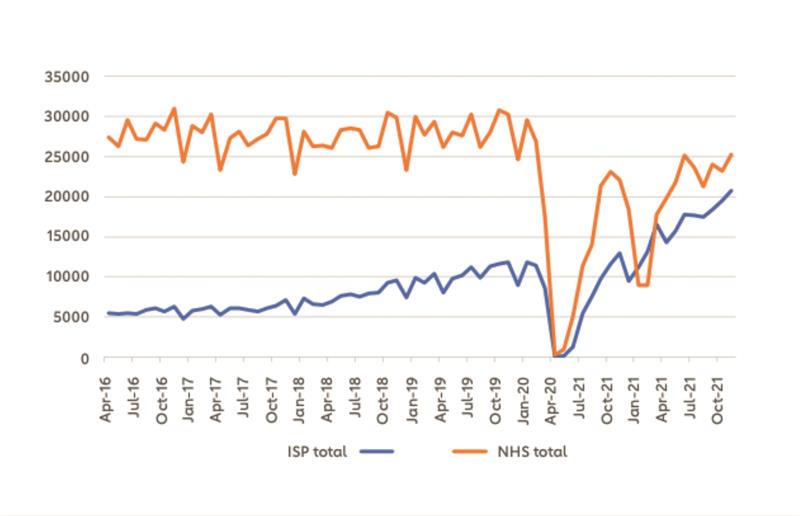
The conundrum in cataract surgery is that it is arguably the world’s commonest operation, yet untreated cataract remains the principal cause of world blindness. The annual cataract surgery volume worldwide is an estimated 28 million eyes but there remains about 100 million people worldwide with significant cataract. That number is set to increase despite many international initiatives over the past 20 years.
The UK has seen a remarkable increase in cataract surgery over the last 10 years; we now perform over 500,000 procedures annually. Significant changes in the sophistication of surgery leading to fewer complications has resulted in greater confidence in recommending surgery to patients. This, added to the projected demographic changes, increase in both age and life expectancy, has resulted in the Royal College of Ophthalmologists (RCOphth) projecting a 50% increase in cataract surgery between 2015 and 2035.
There has been a seismic shift of routine elective surgery in recent years. Faced with increasing demand, NHS reforms such as ‘any qualified provider’ have led to the licensing of services to the independent sector (IS). Cataract data just released by RCOphth shows the contribution of NHS trust hospitals and IS providers in the past five years.
This demonstrates a steady rise in IS provision over time and furthermore a ‘turbo’ effect of the recovery after Covid, with significant acceleration since 2020. Provision of cataract surgery in England is now almost 50% IS-provided and the future for smaller NHS units who offer low volume surgery may be in doubt.
Figure 1: The rise in independent sector cataract provision

How has this happened and is it a good thing?
Long wait times, poor communication, as well as outdated admission and discharge procedures have encouraged new providers to have a critical look at how they offer care. New pathways concentrating on the patient experience have been developed, which are welcome. The attraction of running a practice without guaranteed volumes and yet matching the NHS tariffs has been a force for good and this is reflected by high patient satisfaction levels.
More choice
Enshrined in this new system is that patients have choice. They may want day surgery close to family members, away from their hometown, and to have more say in how care is delivered. The new world is one where the providers need to talk with local optometrists, share problem cases and discuss them together, and show that they are available for patients – not just when an operation is needed but also when urgent follow-up advice is required. I see optometrists as the key link in the chain between patients and their surgeons, as they can offer help on who is going to organise a patient’s operation and care for them after the event.
Let’s face it, the prospect of someone approaching your eye with a very sharp, albeit small, blade strikes fear into most. As surgeons, we are aware that it’s optometrists who offer the personal touch and support that patients need when making a choice. From the hundreds of patients I talk to every month, the number one question I am still asked is: ‘Will you be doing my operation?’ As their optometrist, if you can tell them you know your local ophthalmologists, you will be going a long way towards giving them more confidence in their choice.
We are continually reminded of massive waiting times for wider NHS care but the backlog for cataract surgery has already been largely shifted in many areas. The idea that most patients who need ambulatory day surgery should be going to a big hospital in a faraway town with draconian parking restrictions is so last century. The day surgery centre concept has been alive and well in many countries around the globe for 20-30 years and is popular. The investment in modern, purpose-built facilities with short walks between rooms, a well-engineered, efficient pathway, and welcoming staff who treat patients with empathy is a winning combination.
Add to this modern equipment, an increasing level of patient detail, together with the use of intraocular lens implants with the lowest posterior capsule opacification rates, IS providers can tailor our surgery in a better way than ever before. Surgeons who see high volume cataract surgery as a specialist field in its own right are joining these centres to diversify their careers. These doctors generally have the lowest complication rates, as reported regularly to the national ophthalmology database.
Returning to the thought of how we provide enough surgery for ourselves when it is our turn in 20/30/40 years (delete where applicable), I remain very optimistic that we are well on our way to developing the necessary models to make 21st century cataract surgery in the UK a big success with high standards and excellent visual results.
- Nigel Kirkpatrick is a consultant ophthalmologist and medical director at Newmedica.
